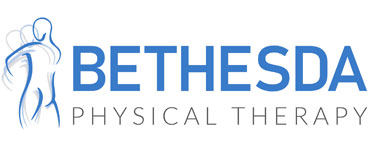Strategies to Address Low Back Pain
Jun 29By: Kyle Updyke, Orthopaedic Resident at Huntingdon Center
 It’s estimated that more than 80 percent of us will experience low back pain (LBP) at some point in our lives.
It’s estimated that more than 80 percent of us will experience low back pain (LBP) at some point in our lives.
Physical therapy is a proven effective treatment strategy.¹ Physical therapists have a variety of methods for treating LBP, with these being three of the most common:
Correcting posture
By looking at postures frequently assumed at work, at home or recreationally, adjustments can be made to minimize the stress placed on the low back. Making a few simple corrections can help to reduce pain in the short term and prevent a recurrence of pain in the long term.
Many people spend the majority of their days sitting. For this reason, correct sitting posture is extremely important in cases of LBP. Proper posture requires both the knees and hips to bend to 90 degrees with the spine in a neutral position.
A neutral position is easily achieved by using a lumbar roll. It attaches to the back of a chair and ensures that your spine stays in its natural position, reducing the amount of stress placed on it. It can be moved from place to place, allowing it to be used at home, in the car and at work2 .
Improving core strength and stability
While core strength is key, doing sit-ups and crunches is not the most beneficial treatment. Instead, many physical therapists elect to train the smaller, deeper abdominal muscles.
Specifically, the transversus abdominis (TA) acts as an abdominal binder, helping to stabilize the lumbar spine. This muscle commonly is weak and does not function appropriately, reducing stability.
Training and strengthening the TA can be accomplished with subtle movements that cause involuntary contractions. Some common strengthening techniques include various breathing patterns and using resistance bands. By training the TA to operate appropriately, lumbar spine stability can be improved and low back pain diminished.
Improving hip mobility
Because of the close relationship between the hips and lumbar spine, an impairment in hip range of motion causes increased strain on the low back.
The hip flexors, for example, have a tendency to become short and tight. This shortening causes strain on the lumbar vertebrae where some of the muscles attach, creating pain. Various techniques can help lengthen these muscles, which will allow the hip and leg to move more freely and relieve pressure on the spine.
In addition, arthritic changes in the hip joint can prevent the hip from moving as well as necessary to allow for bending forward and backward. To compensate, the vertebrae in the lumbar spine must move more between vertebrae, causing instability and leading to pain. Addressing the hip and improving movement within the joint allows for easier movement and reduces back pain.
While not all patients require these specific treatment options, they are valuable for the proper subgroups. Physical therapists choose interventions based on personal experience and patient needs.
